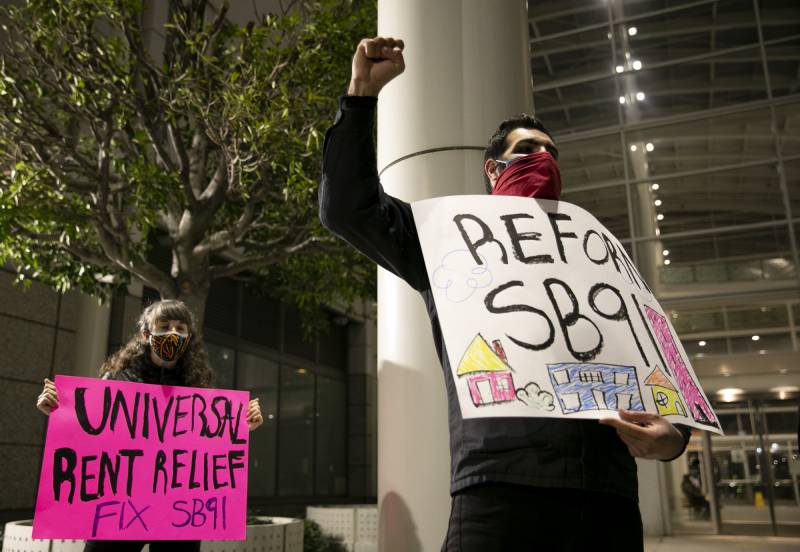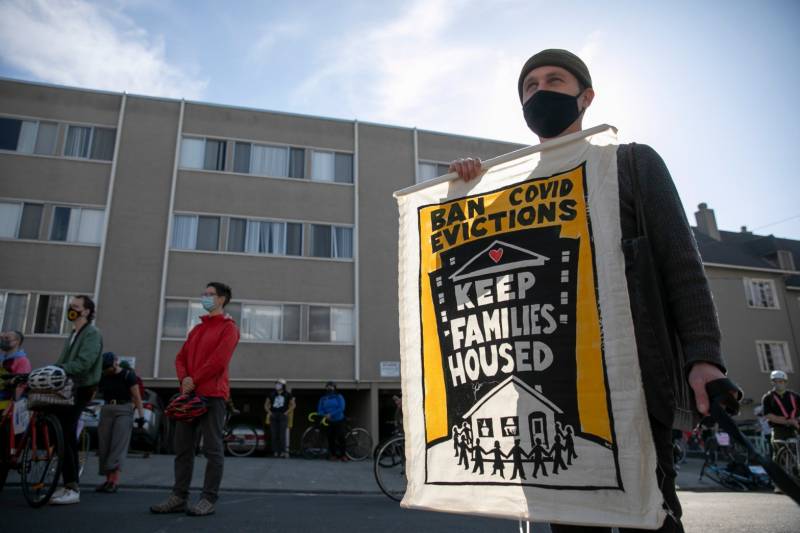So what about the money? The bill says tenants, as well as their landlords, will be able to apply for 100% of back rent and up to three months of forward rent. Previously, without landlord approval, a tenant was eligible for only 25% of missed rental payments.
That was a key ask from tenant advocates, and a source of worry for landlords, who said the provision would be abused. Tenants who receive rental assistance will acknowledge under penalty of perjury they will use the money to pay missed rent.
If the landlord still tries to evict the tenant over non-payment of rent, the court will be able to check whether the tenant received state dollars. If they paid the full amount to the landlord, the eviction will be blocked.
The bill also shields evictions over non-payment of rent from appearing on a tenant’s record, which hampers the ability to rent in the future.
Who is eligible for relief?
The tenant’s household income must be at or below 80% of the area median income during 2020 or 2021. Those income brackets vary by region. Tenants with an income below 50% will be prioritized. Assistance is available to tenants regardless of their immigration status.
Local jurisdictions distributing rental relief might have different rules, however; during the last round of funds in Los Angeles, for example, a two-person household couldn’t make more than $45,050.
The bill expands eligibility to tenants who may have moved out of their home during the pandemic, who were not covered previously. They can now apply for back rent owed to a previous landlord.
What does this deal mean for landlords?
Landlords will be unable to evict tenants over non-payment of rent through Sept. 30. To file an eviction lawsuit after that, the landlord must provide evidence to the court they applied for rental assistance. The case can only proceed if the tenant does not complete their application or qualify for aid.
Landlord groups, which hoped the protections would not be further extended, are frustrated by this provision.
“While there is some recognition of this distress in the deal by providing 100% in rent assistance and requirements for the tenants to use the funds to pay rent, we are very concerned as to when this moratorium will actually end,” Christine LaMarca, president of the California Rental Housing Association, which represents more than 20,000 landlords, said in a statement.
Landlords will still be able to evict tenants for a substantial remodel only if that is necessary to comply with health and safety standards, and if the owner of the property is selling it to a buyer who intends to occupy the property. They cannot, for example, sell to someone who intends to rent out the place.
Those restrictions might be tighter in certain localities, like Los Angeles, which passed a local moratorium earlier this week. But under the bill, other cities would not be able to enact stricter rules through March 2022, a provision supported by the California Apartment Association.
Landlords would be able to apply for 100% of back and forward rent. The previous law said a landlord could apply for 80% of missed rent payments and would have to forgive the remaining 20%; the new bill means that even those who applied for only partial refund will be receiving the missing funds.
If both a landlord and a tenant applied for funds, the money will go directly to the landlord. It will only go to the tenant if the landlord declines to participate in the program.
But the California Apartment Association said the state’s moratorium extension, and the final federal extension through July announced Thursday, would not be necessary if the rent relief money was getting out to landlords and tenants.
“It is frustrating that the state of California and numerous local governments have not quickly disbursed funds to those in need, especially to mom-and-pop rental housing providers who have not seen any rent payments yet must still pay the mortgage, insurance, taxes, maintenance and other expenses,” association President Tom Bannon said in a statement.
What about the money?
The protections are tied to dollars; and lots of them. The state approved an additional $2.6 billion of rental assistance, plus an existing $2.6 billion, all from federal relief funding. That’s $5.2 billion available to cover the missed back rent and up to three months of forward rent.
An analysis by PolicyLink, an Oakland-based research group, suggests that about 758,000 households in California are behind on rent and owe a total of $3.5 billion.

